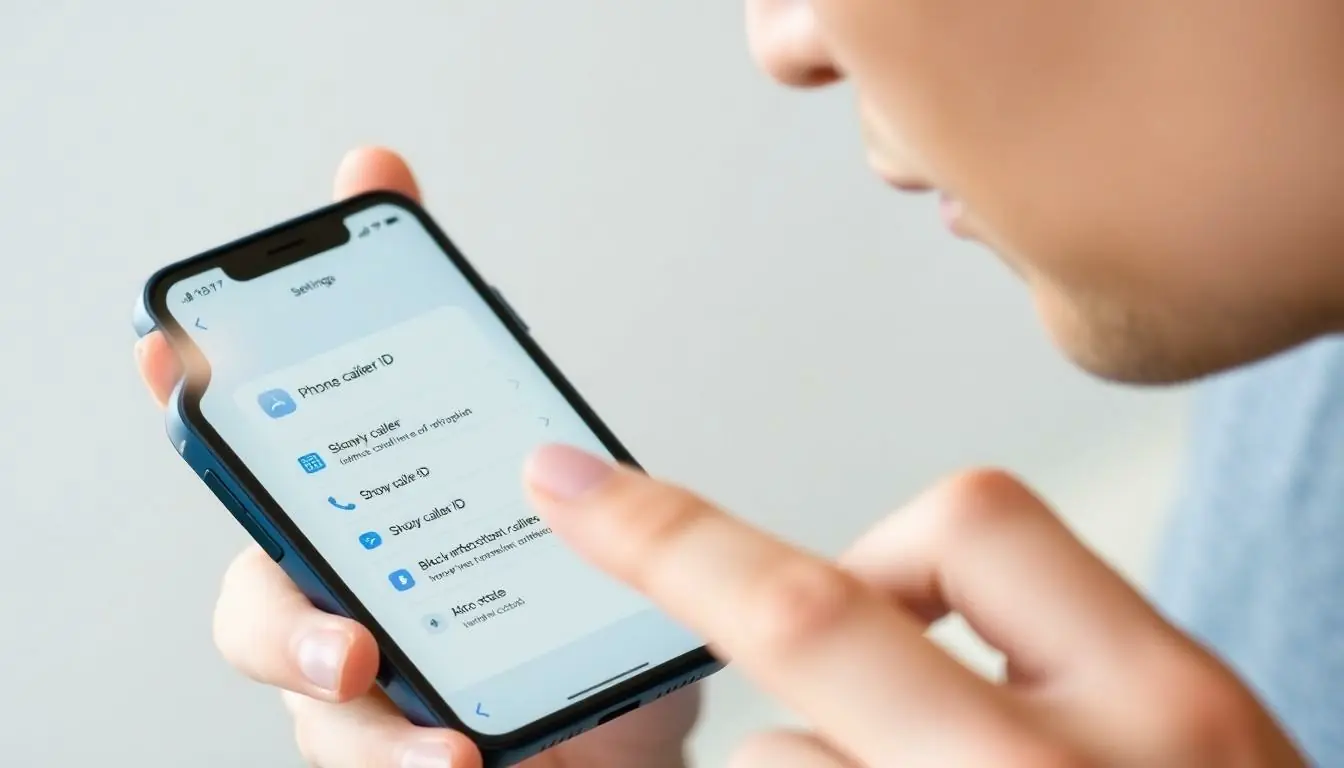In a world where everyone seems to have your number, keeping your privacy intact is more important than ever. Whether you’re trying to avoid pesky telemarketers or simply want to maintain an air of mystery, knowing how to block your caller ID on an iPhone can be a game changer. Imagine the surprise on your friend’s face when they see “Unknown Caller” pop up instead of your name.
Table of Contents
ToggleUnderstanding Caller ID and Privacy
Caller ID serves as a crucial tool for identifying who’s calling before answering. It displays the caller’s number and sometimes the name, which influences whether the recipient decides to engage. Privacy issues arise when individuals feel their personal data is at risk due to unwanted interactions.
Blocking caller ID on an iPhone provides several benefits, primarily enhancing user privacy. Unknown phone numbers can prevent unsolicited calls, allowing users to maintain control over their incoming communication. Keeping their identity concealed adds an element of surprise and discretion.
Certain scenarios necessitate hiding caller ID. For example, contacting businesses, conducting surveys, or simply wanting to protect personal information from potential harassment can warrant this feature. Understanding how different callers perceive anonymity is essential for navigating social interactions and maintaining boundaries.
Implementing these privacy measures creates a layer of protection. Regaining control forms a foundation for healthier communication habits. Those opting to conceal their caller ID favor their own peace of mind while communicating.
Users can easily activate this feature in their iPhone settings or through their mobile carrier. Each method varies slightly but leads to the same outcome: the caller’s number shows as “Unknown Caller” or “Private Number” on the recipient’s phone. Taking these steps enhances one’s privacy while engaging in daily communications.
How to Block Your Caller ID on iPhone
Blocking caller ID on an iPhone offers enhanced privacy. Users can choose to conceal their phone numbers during calls easily.
Method 1: Using Phone Settings
To block caller ID directly from iPhone settings, go to the Settings app. Scroll down and select Phone. Inside the Phone menu, tap on Show My Caller ID. Toggle the switch next to Show My Caller ID to turn it off. This action hides the phone number when making outgoing calls, displaying “Unknown Caller” instead.
Method 2: Utilizing Carrier Services
Some mobile carriers offer services to block caller ID. Contact the carrier’s customer service or visit their website for specific instructions. Depending on the carrier, users may need to request this feature or use certain codes before dialing. Commonly, dialing *67 before a number can block caller ID temporarily, ensuring privacy for that specific call.
Alternative Ways to Maintain Privacy
Maintaining privacy extends beyond blocking caller ID on the iPhone. Exploring additional options can further safeguard personal information while making phone calls.
Using Third-Party Apps
Third-party apps provide alternative methods for privacy-conscious users. Applications like Hushed or Sideline offer unique phone numbers that mask the user’s actual identity. Users can easily download these apps from the App Store and set them up in minutes. Each application allows users to make calls and send texts without revealing their primary number. Features like encrypted messaging and disposable numbers amplify privacy, reducing the chances of unwanted contact.
Making Anonymous Calls
Making anonymous calls stands as another effective strategy to ensure privacy. Users can dial *67 before entering the recipient’s number, which blocks caller ID for that specific call. This method works for both iPhones and other mobile devices. Anonymity during calls allows individuals to communicate without disclosing personal information. Businesses also rely on this tactic to protect caller identities while reaching out to potential customers. Throughout, keeping anonymity adds an essential layer of safety in communication.
Troubleshooting Common Issues
Users may encounter issues when trying to block caller ID on their iPhones. Identifying the problem quickly leads to a solution.
Settings not saving can occur. If changes don’t reflect, restarting the iPhone often resolves the issue. Adjusting the “Show My Caller ID” setting again may also help.
Carrier restrictions might prevent blocking caller ID. Contacting the mobile carrier for guidance can clarify available options. Confirming whether the carrier supports this feature is essential.
Temporary blocks can fail when using codes like *67. Dialing this code before each number is crucial for successful blocking. Ensuring the correct format is important when inputting the recipient’s number.
Network problems may hinder the feature. Checking the network connection before making calls can ensure smoother operation. Switching to Wi-Fi calling might also enhance connectivity when making anonymous calls.
Third-party apps may present their own challenges. Users should verify app permissions to ensure they function correctly. Restarting the app or refreshing the settings can often resolve glitches.
Anonymity might not work if the recipient has caller ID blocking settings enabled. Checking with recipients about their settings can clarify expectations regarding call privacy.
Following these tips can enhance the experience when trying to block caller ID. Users should maintain patience, as troubleshooting may take time.
Conclusion
Blocking caller ID on an iPhone is a simple yet effective way to enhance personal privacy. Users can take control of their communication by utilizing the built-in settings or carrier services. This not only helps in avoiding unwanted calls but also allows for more discreet interactions.
By exploring options like third-party apps and temporary blocking methods, individuals can tailor their communication experience to suit their needs. Prioritizing privacy in today’s digital age is vital, and knowing how to manage caller ID settings is an important step in safeguarding personal information. Embracing these practices can lead to a more secure and enjoyable communication experience.





